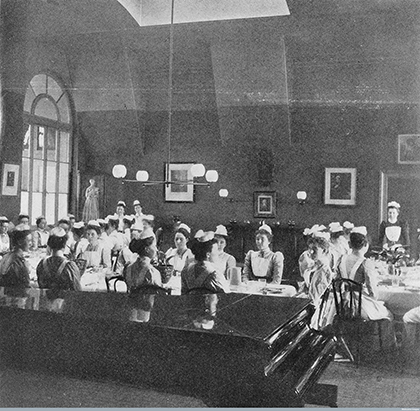From Matrons to Microbes
A creative exploration of the role of the British nurse in controlling hospital infection before 1970
Healthcare-associated infection is a global health safety challenge, contributing to over 20,000 deaths in the UK annually. Infection control is an important indicator of quality of care and refers to policies and procedures used to minimize the risk of spreading infections, especially in hospitals and healthcare facilities.
Attempts to control hospital-acquired infections have a long and nuanced history. From the mid-nineteenth century, Joseph Lister (1827-1912) and Florence Nightingale (1820-1910) pioneered many of the hospital infection control measures we still use today.

This project aimed to present new insights into current hospital infection control policy and practice to audiences beyond academia by uncovering its history at four British hospitals closely linked to Lister and Nightingale: King’s College Hospital and St Thomas’ Hospital in London and Glasgow Royal and Edinburgh Infirmary in Scotland. In collaboration with the Florence Nightingale Museum at St Thomas’ Hospital, the project team presented historic insights into the nurses’ role in infection control via three main outputs.
The first output was a dramatic reconstruction of a lecture to St Thomas’s nurses, that originally took place around 1900, and was aimed at adult audiences. Taking place on 22 October 2015, the interactive lecture was a historically accurate performance drawing on quotations from archival research and artefacts from the Museum’s collection. It demonstrated the level of infection control knowledge trainee nurses in the 1900s were expected to acquire but also highlighted the strict disciplinary hospital regime under which they were taught.
The second output was a mini-exhibition aimed at school and family groups, that charted the importance of nursing in the history of infection control and other medical history topics. The third output was a public talk given by the project team and museum staff to accompany and expand upon topics discussed in the exhibition. All events took place at the Florence Nightingale Museum free of charge.
Project Team
This project was led by Dr Claire L. Jones, Research Associate in the Florence Nightingale Faculty of Nursing and Midwifery at King’s College London.
Natasha McEnroe, Director of the Florence Nightingale Museum, was the cultural partner. Tracing infection control at these four hospitals between 1870 and 1970 formed part of a Leverhulme Trust-funded project between King’s College London and the University of Glasgow.
From Matrons to Microbes: The Role of the Nurse in Hospital Infection Control in Britain, 1870-1970 was a collaboration between the Florence Nightingale Faculty of Nursing and Midwifery at King's College London and The Florence Nightingale Museum. It was supported by the university's Culture team.
Image credit: The Nightingale Home and Training School for Nurses, St. Thomas's Hospital, c. 1900. With permission from the Wellcome Library, London.